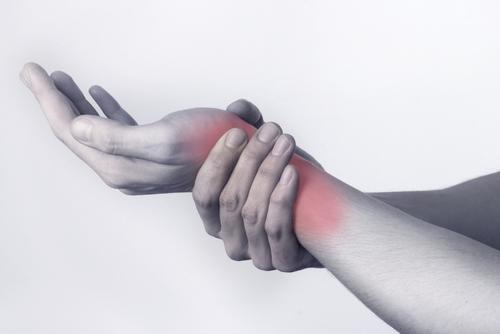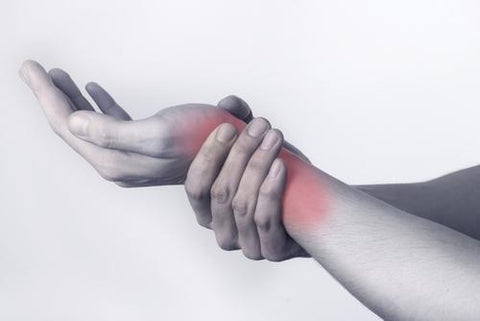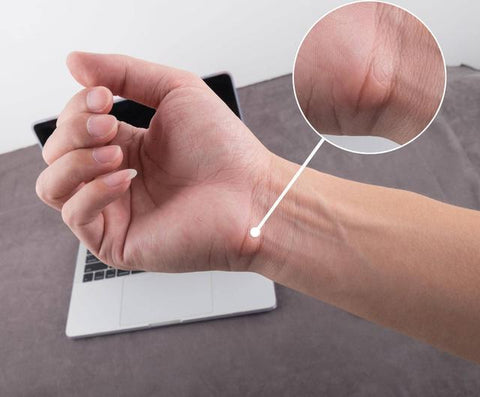
Easily relieve wrist syndrome and Mouse hand symptoms!
Share
What is wrist syndrome

Carpal tunnel syndrome is a very common disease of civilization, mainly related to hand karma. With this disease, symptoms such as gradual numbness, burning, swelling of the wrist joints, inflexible hand movements, weakness, etc. will appear. At night, the pain will increase, and the patient may even wake up from a dream. The keyboard, especially the mouse, is our most common "carpal tunnel killer". With the increasing number of drivers, the steering wheel has become a big "carpal tunnel killer". Other occupations that frequently use both hands, such as musicians, teachers, editors, reporters, architects, assemblers, etc., are all likely to suffer from carpal tunnel syndrome. Women are the biggest victims of carpal tunnel syndrome, their incidence is about three times that of men, and the age at which it occurs is mostly 30-60 years old. The reason is that the bones of women are smaller than those of men, the carpal tunnel of the hand is naturally thinner than that of men, and the median nerve of the wrist is more susceptible to compression injury. Especially pregnant women and patients with certain endocrine disorders, such as diabetes, thyroid dysfunction, rheumatism, or rheumatoid arthritis, are more likely to cause carpal tunnel syndrome due to the thickening of the tendon synovium and the reduction of the carpal tunnel cavity. If you use the computer frequently, it will make the situation worse, making the "mouse hand" more powerful.
Mouse hand symptoms

The carpal tunnel is a fibrous tunnel surrounded by the transverse carpal ligament and the carpal sulcus, which protects the median nerve of the wrist. Generally, the movement of the wrist under normal conditions will not hinder the median nerve. But when you are operating a computer, because the keyboard and mouse have a certain height, the wrist must be dorsiflexed to a certain angle. At this time, the wrist is in a state of compression for a long time, oppressing the median nerve in the carpal tunnel, and blocking nerve conduction. At the same time, the blood supply is blocked, resulting in
disturbances in the sensation and movement of the palms, and the following symptoms will occur.
1. Palms, fingers, wrists, forearms and elbows are stiff, sore, and unwell.
2. Intermittent numbness and tingling of fingers and palms. Some patients have severe numbness in their thumbs, index fingers and middle fingers.
3. The grip strength and the ability to work together in various parts of the hand are reduced.
4. Uncomfortable and painful when stretching the thumb. In severe cases, the fingers and hands are weak and weak.
5. The tingling sensation occurs more frequently during sleep and when you just wake up. The pain will become more serious at night and sometimes even affect sleep
6. Pain can persist to the arms, upper back, shoulders and neck.
Main hazard
Patients may feel tingling in their hands, weakness, and inability to make fists and grasp small objects. As the symptoms worsen, they may progress to the inability to drive and dress. The hand muscles turn white, and the hand function is irreversibly damaged. In severe cases, permanent hand disabilities may occur. In addition, patients may experience reflex sympathetic dystrophy, with the result that the patient has to give up computer-related work. The following statistics are from the U.S. Department of Labor: According to the U.S. Department of Labor, repetitive strain injuries on the upper body (such as wrists, elbows, and shoulders) of employees account for nearly 2/3 of reported occupational diseases. The most common strain is the mouse hand. The U.S. Department of Labor claims that the mouse hand was a major occupational disease in the United States in the 1990s, causing considerable disability among employees.
How to improve wrist syndrome
1. Wear a wrist brace. If you have carpal tunnel syndrome, the easiest thing you can do is to rest your wrist. This will prevent you from bending and bending your wrists while sleeping. You may also wish to wear a brace during the day, depending on what activities usually cause your pain.
2. Keep your arms straight. Bending your elbow may increase the pressure on your nerves, which can make your symptoms worse.
3. Ice compress. Ice in your wrist joints can help reduce swelling, which in turn can reduce the pain you feel. Try to put an ice pack on your wrist for 15-20 minutes.










